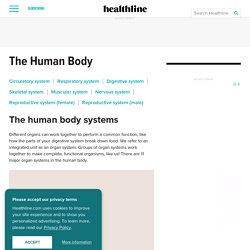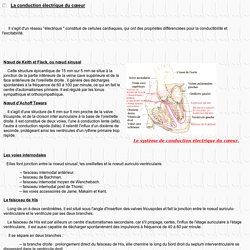

BioDigital Human: Anatomy and Health Conditions in Interactive 3D. Abonnement - Le Corps humain virtuel scolaire. Human Body: Explore the Human Anatomy in 3D. Different organs can work together to perform a common function, like how the parts of your digestive system break down food.

We refer to an integrated unit as an organ system. Groups of organ systems work together to make complete, functional organisms, like us! There are 11 major organ systems in the human body. The circulatory system is a body-wide network of blood, blood vessels, and lymph. Powered by the heart, it is the body’s distribution system to organs with oxygen, hormones and essential nutrients that helps it function properly.
Learn more about these body parts in the circulatory system: Every tissue within the body requires oxygen to function. Learn more about these body parts in the respiratory system: The skeletal system gives the body its basic framework, providing structure, protection, and movement. The nervous system allows us to perceive, comprehend, and respond to the world around us. Learn more about these body parts in the nervous system: Cerveau. Le système de conduction électrique du coeur. Les voies internodales Elles font jonction entre le noeud sinusal, les oreillettes et le noeud auriculo-ventriculaire. -- faisceau internodal antérieur. -- faisceau de Bachman. -- faisceau internodal moyen de Wenchebach. -- faisceau internodal post de Thorel. -- les voies accessoires de Jame, Makaim et Kent.

Le faisceau de His Long de un à deux centimètres, il est situé sous l'angle d'insertion des valves tricuspides et fait la jonction entre le noeud auriculo-ventriculaire et le ventricule par ses deux branches. Le faisceau de His est par ailleurs un centre d'automatismes secondaire, car s'il propage, certes, l'influx de l'étage auriculaire à l'étage ventriculaire, il est aussi capable de décharger spontanément des impulsions à fréquence de 40 à 60 par minute. Il se sépare en deux branches : -- la branche droite : prolongement direct du faisceau de His, elle chemine le long du bord droit du septum interventriculaire se dispersant dans le ventricule droit. Le réseau de Purkinje. Le fonctionnement électrique du coeur. Corps humain virtuel.